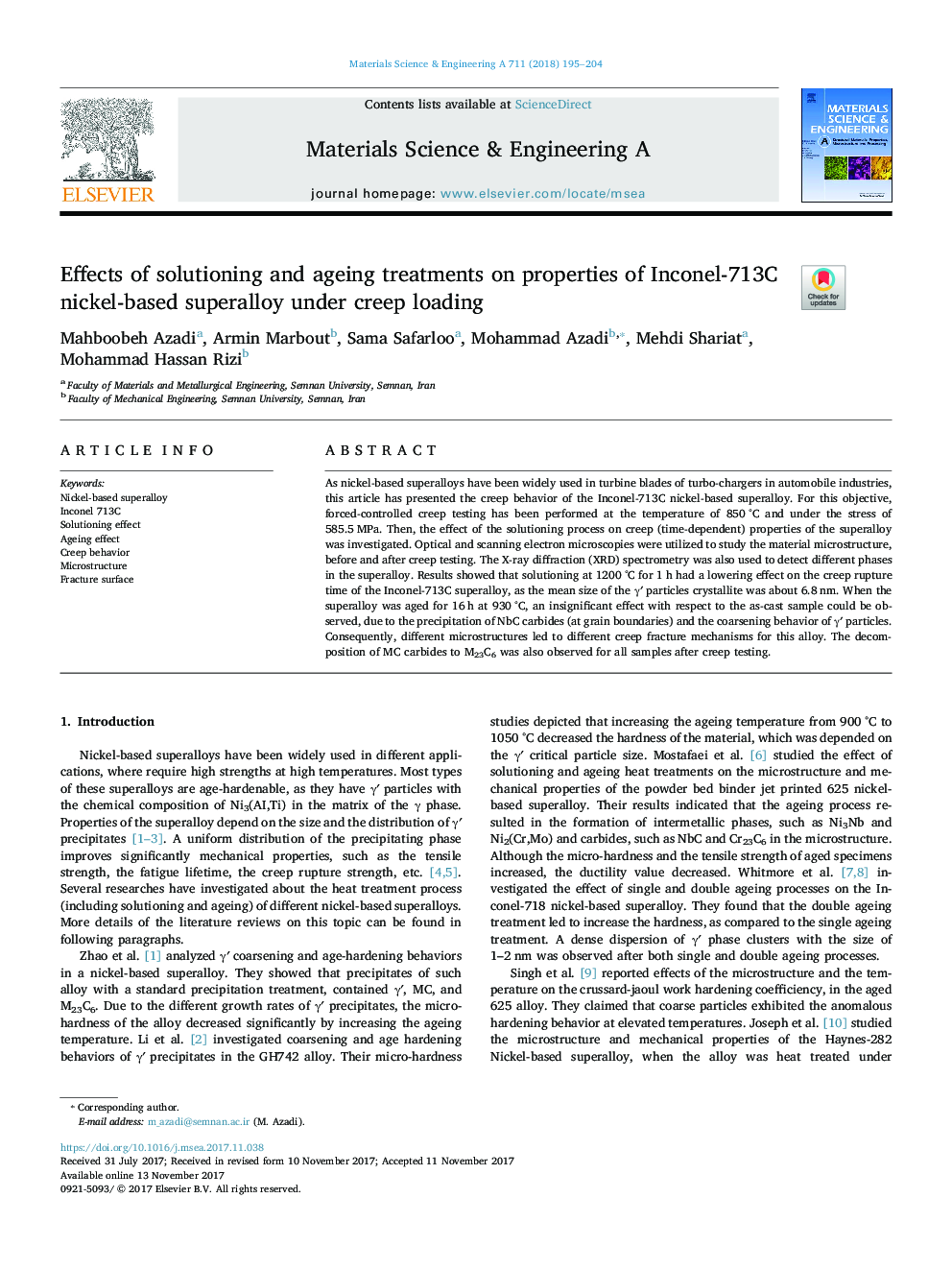| Article ID | Journal | Published Year | Pages | File Type |
|---|---|---|---|---|
| 7974217 | Materials Science and Engineering: A | 2018 | 10 Pages |
Abstract
As nickel-based superalloys have been widely used in turbine blades of turbo-chargers in automobile industries, this article has presented the creep behavior of the Inconel-713C nickel-based superalloy. For this objective, forced-controlled creep testing has been performed at the temperature of 850 °C and under the stress of 585.5 MPa. Then, the effect of the solutioning process on creep (time-dependent) properties of the superalloy was investigated. Optical and scanning electron microscopies were utilized to study the material microstructure, before and after creep testing. The X-ray diffraction (XRD) spectrometry was also used to detect different phases in the superalloy. Results showed that solutioning at 1200 °C for 1 h had a lowering effect on the creep rupture time of the Inconel-713C superalloy, as the mean size of the γⲠparticles crystallite was about 6.8 nm. When the superalloy was aged for 16 h at 930 °C, an insignificant effect with respect to the as-cast sample could be observed, due to the precipitation of NbC carbides (at grain boundaries) and the coarsening behavior of γⲠparticles. Consequently, different microstructures led to different creep fracture mechanisms for this alloy. The decomposition of MC carbides to M23C6 was also observed for all samples after creep testing.
Keywords
Related Topics
Physical Sciences and Engineering
Materials Science
Materials Science (General)
Authors
Mahboobeh Azadi, Armin Marbout, Sama Safarloo, Mohammad Azadi, Mehdi Shariat, Mohammad Hassan Rizi,
